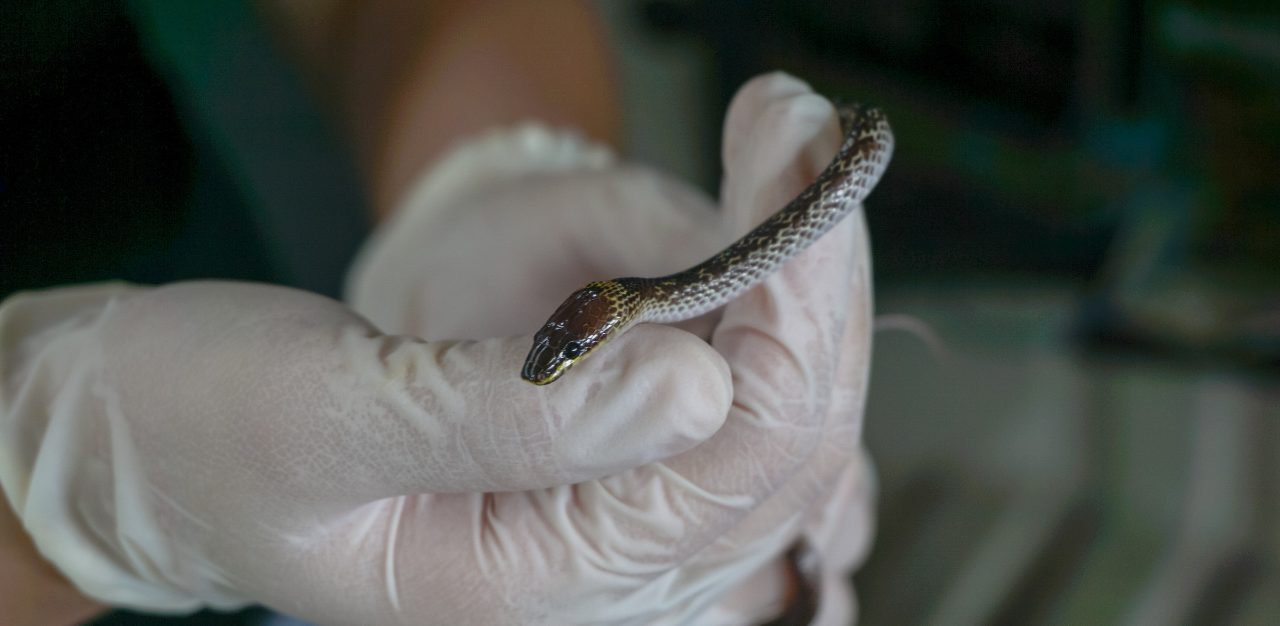Humans attacked by wild boars; macaques snatching food; otters devouring prized fishes – incidences of animals infringing on human life make the headlines every other week. But what about the flip side of the story? How are animals implicated in this constant struggle between man and wildlife?
TheHomeGround shadows two ACRES (Animal Concerns Research and Education Society) wildlife rescue volunteers for an afternoon to get a first-hand glimpse of the struggles that wildlife face in Singapore’s rapidly urbanising environment.
Over lunch, Serene Iek, 30, a wildlife rescue volunteer from ACRES, shares a heart-wrenching story of a snake who lost its life after an elderly man had doused it with insecticide, put it in a plastic bag, and left it in the trash to die.
Even though ACRES’ volunteers had tried to rescue it, their efforts were futile.
That story is just one of many instances when animals find themselves on the short end of the stick in this growing struggle between wildlife and humans, as Singapore continues to develop.
Types of human-animal conflict in Singapore
Beyond instances of outright attacks against animals, human-wildlife conflict can also manifest itself in more insidious ways. Kalaivanan, the co-Chief Executive of ACRES, suggests that human-wildlife conflict can also occur as a result of poor land planning, which fails to account for the displacement of animals.
Mr Kalai explains, “Land is developed but the animals get stranded with nowhere to go. They often become lost within an urban jungle, which can lead to unfortunate incidents.”
One such incident involves a particularly memorable rescue that Ms Iek and Carmen Choong made with a brood of junglefowl chicks. The four chicks had fallen into a deep, narrow drain the night before, and were unable to escape, leaving their mother to cry for them all night at the entrance of the drain.

The next morning, what transpired was a back-breaking rescue that took over five hours, as rescuers attempted to coax the chicks out with a makeshift pole that had a kitchen sieve attached.
Indeed these occurrences are plentiful, ranging from arduous rescues, to animals hit by traffic, or simply relocating animals that found themselves venturing too far into human territory.
While ACRES was unable to provide us with the exact numbers, Ms Iek estimates that they sometimes get over 50 cases in a day.
“It can be very crazy,” she says.
Ms Choong adds, “I think ever since COVID started and there are more people staying at home… there are a lot of calls.”
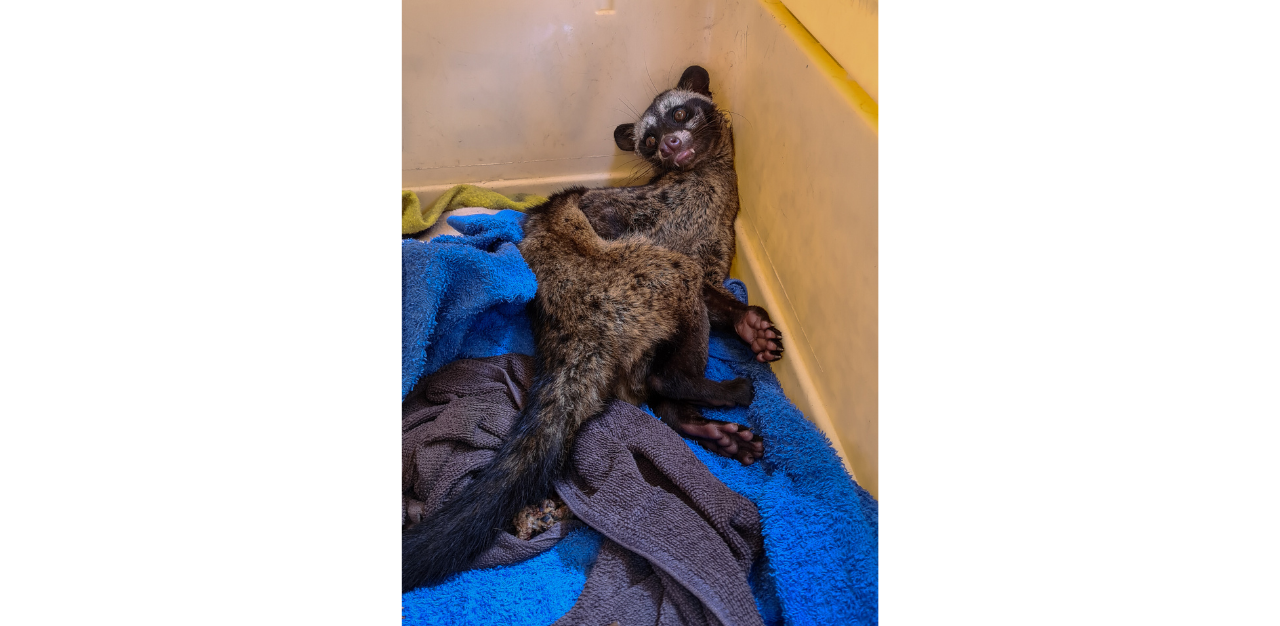
In the few short hours following them both, we caught a small glimpse of just how many animals are implicated in this struggle. From a tiny wolf snake that found itself unwelcome in a condominium estate, to a common palm civet that was the victim of a road accident, or a lone junglefowl chick that sprained its leg, Singapore’s wildlife are under constant threat.
Reasons why human-wildlife conflict exists
Mr Kalai elaborates that besides land scarcity, human-wildlife conflict is further exacerbated by the misconceptions surrounding animals.
For instance, he cites that many individuals believe animals are venturing out of the forests due to a lack of food in these locations.
“This is not true,” he stresses. On the contrary, he explains that many wildlife species, such as the oft-sighted long-tailed macaques and wild boars leave forested areas due to changes in their behaviour caused by human feeding.
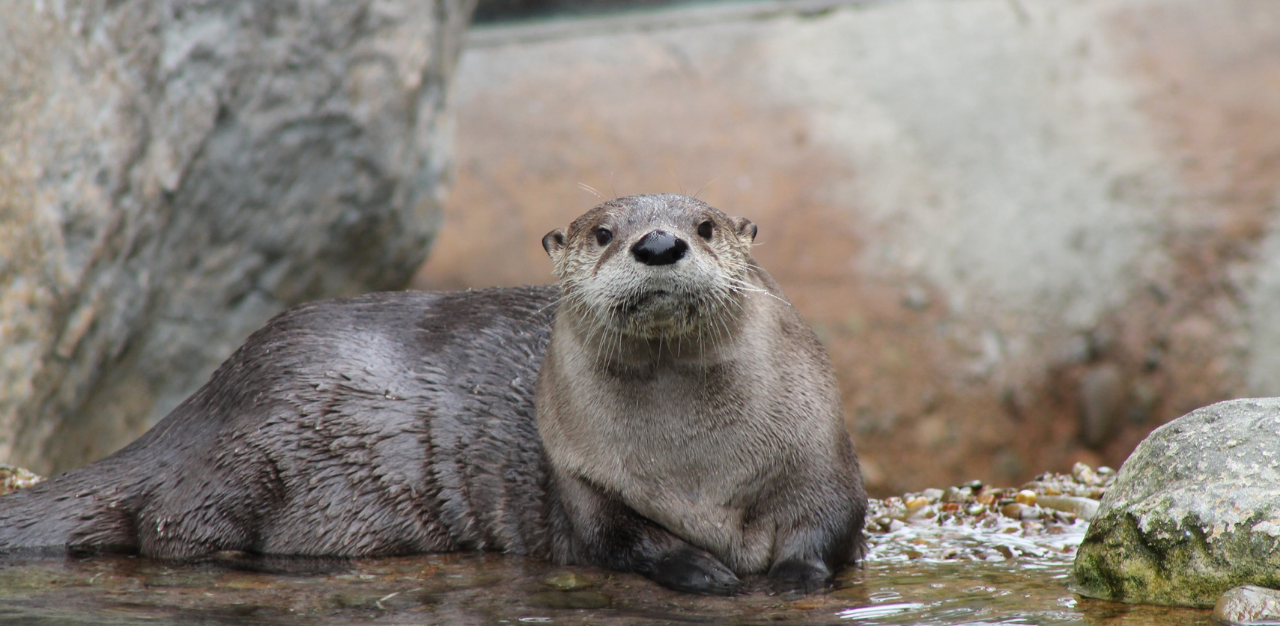
Social media has also led to the popular, but misinformed, belief that wild animals, such as otters, wild boars, macaques and snakes, are overpopulated here in Singapore.
He questions, “With our forested areas decreasing in size, how can there be an overpopulation? [Instead,] what is true is that more people are sharing information via social media, which creates an impression that wild animals are increasing.”
This phenomenon can be explained by the availability bias, which posits that individuals tend to evaluate a situation based on information that is available to them. For instance, the constant media coverage of long-tailed macaques grabbing food and smooth-coated otters entering “human” territory can result in people thinking that their population is larger than it actually is.
Reptiles, the most misunderstood of animals
The most worrying and pertinent point raised by Mr Kalai, Mses Iek and Choong, however, is the vast amount of fear and misinformation surrounding reptiles, like snakes and lizards.
Ms Iek shares, “We do get calls saying that, ‘Oh, I don’t want them to eat my children.’ It’s a very common thing that we hear…People have this strong fear about them because of how, traditionally, the media perceives these animals to be really, really scary.”
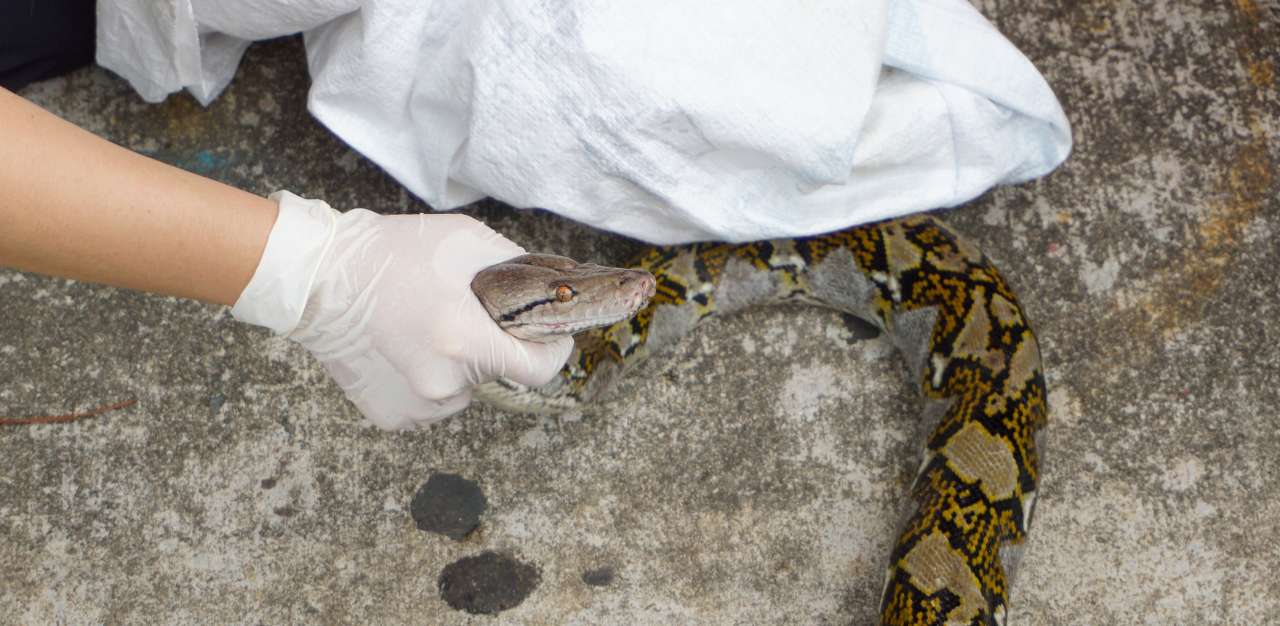
“It’s how the movies portray them to be as well,” Ms Choong adds. “You watch Anaconda, Snake on a Plane, that kind of stuff. The kind of movies, while they give you a thrill, they also give you the fear.”
Mr Kalai agrees, saying that “reptiles are among the most misunderstood animals in the world.”
Oftentimes, people resort to extreme measures when they encounter reptiles, such as the elderly man who doused the snake in insecticide. Their actions stem not from ill-intent, but a fear of these animals.
Ms Iek highlights, “People try to harm them or try to do things to them just based on how they look.”
On their part, ACRES volunteers do their best to educate the public when they come across situations like these.
“When we go for rescue cases, we do tell them, this [the snake] is actually very harmless,” Ms Iek says.
They exemplify this in every rescue. After picking up and containing the animals, the two volunteers speak with the residents who have encountered these animals, sharing more information about the species, and how such wildlife cases can be handled in the future.
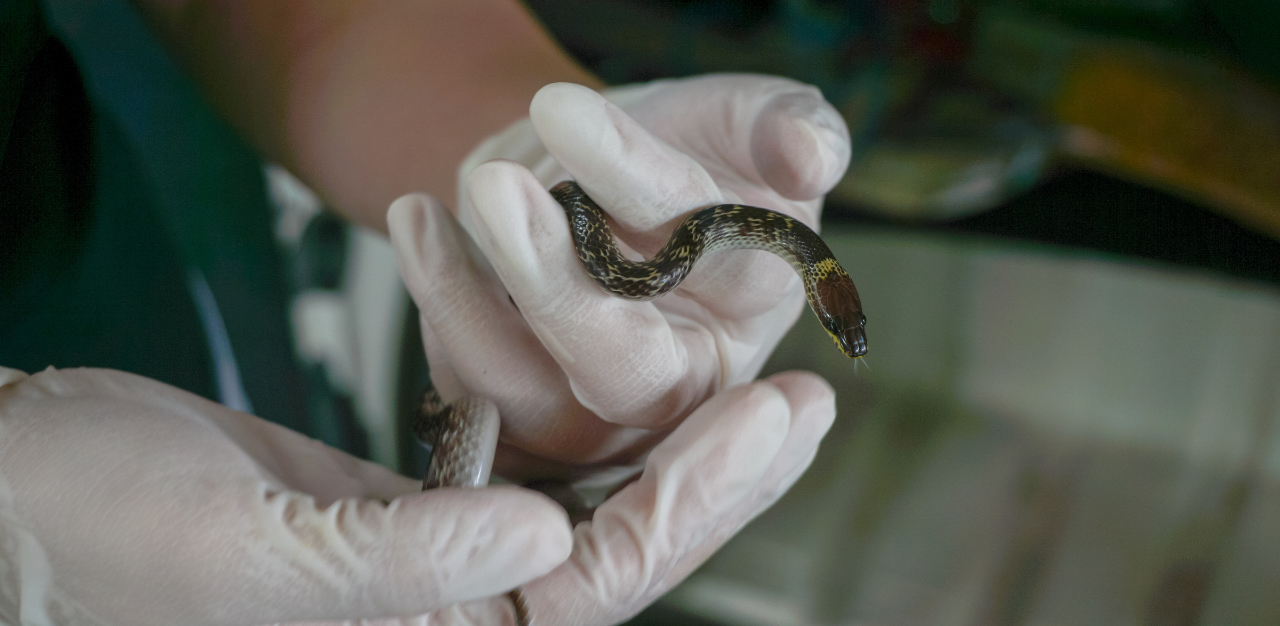
Where circumstances were safe and appropriate, Mses Choong and Iek even gave me the chance to handle the snake myself, which was how I found a tiny wolf snake in hand, marvelling at the strength within its lithe body. While I had never been afraid of snakes prior to this experience, getting to touch one first-hand allowed me to realise just how harmless these creatures are, as long as they are not needlessly provoked.
Ways to mitigate human-animal conflict
“As long as you keep your distance, and not try to provoke or attack them [the animals]… it will not cause any harm to you,” Ms Choong advises.
“I think a lot of education needs to be done,” Ms Iek says. She likens it to how the Health Promotion Board educates about health screenings, suggesting that “the Government can put in more effort to educate people on wildlife.”
Mr Kalai reiterates the point: “Education is key towards making the notion of co-existence work.”
“The community must do their part in reducing conflict situations. Feeding, direct or indirect must be stopped or reduced,” he elaborates. “The wider community can also put in collective effort to understand why wildlife can be sighted more often in an urban landscape and learn ways to co-exist.”
For more information on the human-wildlife conflict, you may refer to ACRES’ website. If you encounter any wildlife-related issues, contact the 24-hour ACRES Wildlife Rescue Hotline at +65 9783 7782.
Join the conversations on THG’s Facebook and Instagram, and get the latest updates via Telegram.
